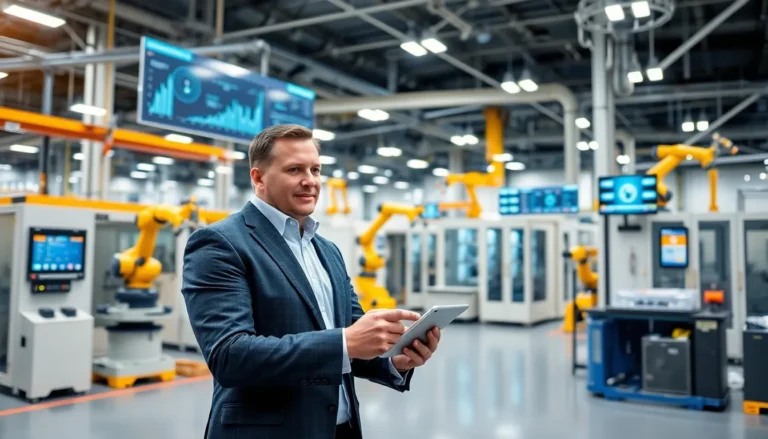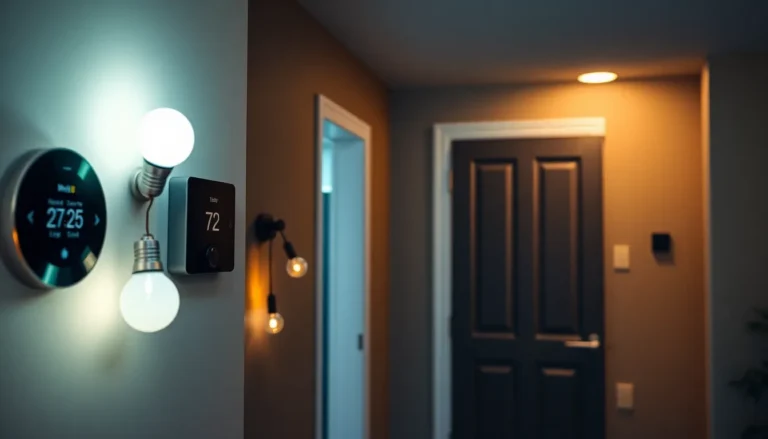When it comes to technology buzzwords, few things get tongues wagging quite like “5G Internet of Things”. Imagine a world where your refrigerator orders groceries, your thermostat learns your preferences, and your car can park itself, all seamlessly connected in an instant. Sounds like a sci-fi movie, right? But hang on, because as daunting as it may sound, 5G is here to revolutionize our daily lives, and you definitely want to be in the loop. In this text, we’ll jump into the exciting world of 5G and IoT, exploring why this game-changing technology is destined to reshape our present and future.
Table of Contents
ToggleUnderstanding 5G and Its Importance

5G stands for the fifth generation of mobile networks. It’s not just about faster internet speeds: it’s a complete overhaul of the connectivity landscape. With the ability to connect a massive number of devices simultaneously, 5G is the catalyst that will propel IoT forward. Think of 5G as a superhighway for data, one that can handle an unprecedented volume of traffic with ease.
Key Features of 5G Technology
To truly appreciate the magic of 5G, it’s crucial to understand its key features. First off, the technology boasts enhanced bandwidth, resulting in download speeds that can reach up to 10 gigabits per second. That’s roughly 100 times faster than 4G.
Lower latency is another standout feature. With response times reduced to about 1 millisecond or even less, real-time communication enables everything from autonomous vehicles to remote surgeries. Finally, the capacity to connect millions of devices in a single area gives rise to a more interconnected world, forging the path for smarter cities and homes.
The Role of 5G in IoT Development
5G’s impact on the Internet of Things is monumental. Essentially, this technology lays the foundation upon which IoT devices can thrive, connecting them effortlessly and enabling them to communicate with one another.
Enhanced Connectivity and Speed
Imagine a coffee machine that brews your morning cup just as you step out of the shower. That’s the kind of connectivity 5G enables. The increased speed allows devices to communicate faster and more reliably.
This capability is crucial not just for personal convenience but also for businesses that rely on efficient operations. For instance, agricultural IoT devices can transmit real-time data on crop health and weather conditions, allowing farmers to make rapid decisions to optimize yields.
Lower Latency for Real-Time Applications
With 5G’s low latency, real-time applications are no longer a dream. Think about virtual reality gaming or remote control of drones: these applications hinge on swift data transfer. The reduced latency means responses are virtually instantaneous, crucial for scenarios where every millisecond counts.
Challenges and Considerations for 5G IoT Adoption
While the benefits of 5G in the IoT realm are enticing, it’s not all smooth sailing. Several challenges and considerations must be addressed for successful adoption.
Infrastructure Requirements
Implementing 5G requires a significant investment in infrastructure. This includes installing a new network of antennas and upgrading existing towers to support the required frequency bands. Cities will have to invest in dense networks of small cells to ensure comprehensive coverage, making this not just a technical challenge but also a logistical one.
Security Concerns in 5G IoT Networks
The interconnected nature of 5G IoT networks raises serious security concerns. With increased connectivity comes increased vulnerability. Devices become entry points for malicious actors if not adequately secured. Hence, robust security protocols will need to be integrated from the outset, before the network goes live.
Future Trends and Innovations in 5G IoT
The future of 5G IoT is both exciting and packed with possibilities. Innovations on the horizon promise to further push the boundaries of what connectivity can achieve.
Impact on Various Industries
From healthcare to finance, the ramifications of 5G IoT technology will be felt across various sectors. In healthcare, for example, wearable devices could relay real-time health data to doctors, allowing for quicker diagnosis and treatment. The financial sector, meanwhile, can leverage 5G-enabled IoT for more secure transactions and smarter banking solutions.
Predictions for 5G IoT Growth by 2030
Experts predict that by 2030, there will be over 25 billion connected devices worldwide. This staggering number underscores the immense potential of 5G technology to transform everyday life. As more devices come online, businesses and consumers alike will find new uses for these innovations, leading to economic opportunities and a smarter world.










